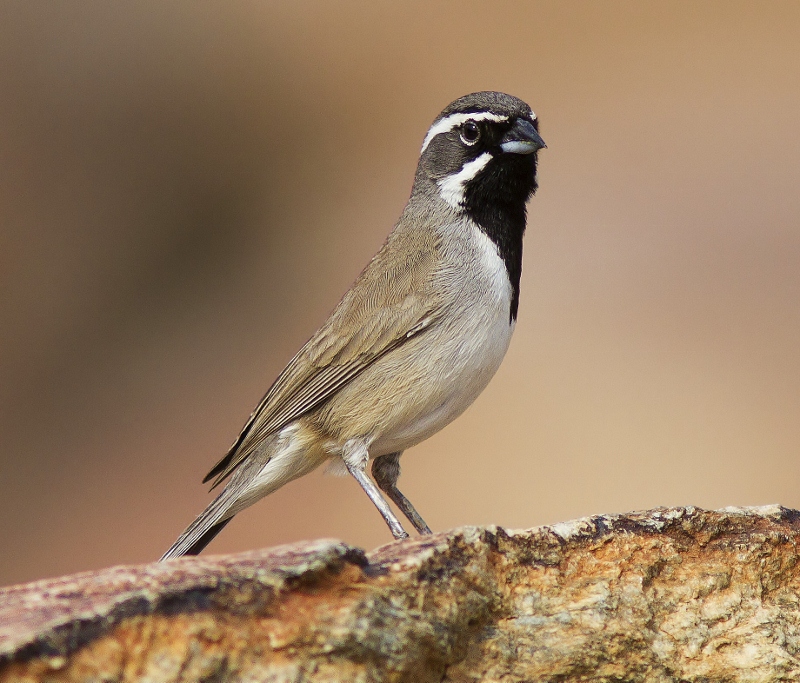 |
| Photo by Steve Berardi (Wikipedia) |
Common name:
black-throated sparrow (en); escrevedeira-de-faces-listadas (pt); bruant à gorge noire (fr); chiero gorjinegro (es); schwarzkehlammer (de)
Taxonomy:
Order Passeriformes
Family Emberizidae
Range:
This North American species is found in the western United States, from Washington down to California, New Mexico and south-western Texas, and also in northern and central Mexico. The more northern population migrate south to winter along the southern parts of the range.
Size:
These birds are 12-14 cm long and weigh 11-15 g.
Habitat:
The black-throated sparrow is found in hot deserts with sparse vegetation and dry scrublands, from sea level up to an altitude of 2.200 m.
Diet:
These birds are omnivorous, mainly taking seeds during the winter months and insects during the breeding season. They eat the seeds from various scrubs, grasses and herbs, and insects such as grasshoppers, crickets ans cockraches.
Breeding:
Black-throated sparrows breed in April-August. The nest is a loosely built cup made of grasses and stems, and lined with plant fibres, animal hairs and feathers. It is placed on a scrub or cacti, typically less than 1 m above the ground. There the female lays 3-4 white or pale blue eggs, which are incubated for about 12 days. The chicks are fed by both parents and fledge 10 days after hatching, but continue to receive food for another 1-2 weeks. Each pair raises 2 broods per season.
Conservation:
IUCN status – LC (Least Concern)
This species has a very large breeding range and a global population estimated at 27 million individuals. The population has undergone a large decline of 22% per decade over the last 4 decades.







